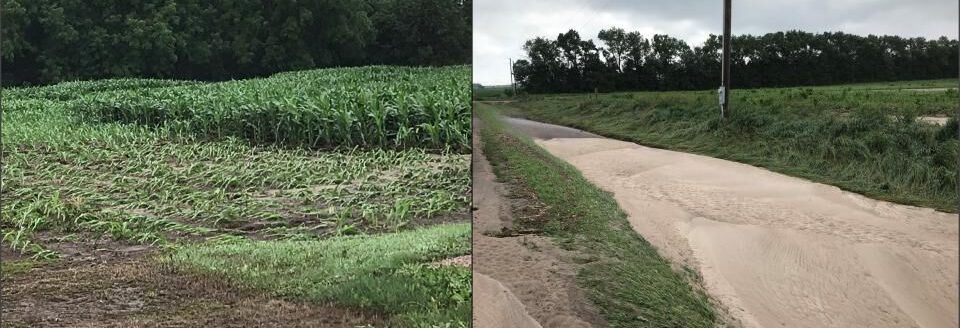Soil aggregate stability. What is it? Why is it important?
I would like to talk about soil aggregate stability. A soil aggregate is a whole bunch of individual soil particles that are bound, or glued, together. How well those aggregates hold up to disruptive forces like tillage and erosion tell us how stable that soil aggregate is. When these disruptive events occur, if soil particles stay bound together the more stable the soil aggregate is.
Aggregate stability is critical for water infiltration and in dryland cropping systems it’s all about water. The more we can capture and store in the soil profile the better chance we have a growing a good, productive crop. Stable soil aggregates that don’t break apart when water enters them provide more pore space for water to enter into. This increases the soil’s water holding capacity. Good aggregate stability also helps in root development, which helps the plant take up more water and nutrients. The soil is also more resistant to erosion.
In low aggregate stability soils, soil particles break away from each other when water enters into an aggregate. The individual soil particles fill surface pore spaces and can form a hard crust on the soil surface when the soil dries. Water has difficulty penetrating this crust and it typically runs off, causing erosion. The crust can also restrict seedling emergence.
Good aggregate stability is highly dependent on soil organic matter and biological activity in the soil. Certain fungal groups help plant roots gather water and nutrients and help bind soil particles together. Other organisms, like earthworms, secrete glue like substances the help hold the particles together. Decomposing soil organic matter also provide organic glues.
Certain soil labs can complete tests to tell you how stable your soil aggregates are. But a simple way is to dip an air dried soil clod in a cylinder of water. If that clod breaks up quickly you have low stability because there are no glues holding those aggregates together. If the clod stays together 30 minutes or longer you have high stability.
So how do we improve our soil aggregate stability? The simple answer is to reduce tillage. Excessive tillage physically breaks down soil aggregates and disturbs the fungal groups that secrete glues that hold soil particles together. Over time it also depletes soil organic matter which is also important to aggregate stability.
For more information about this or other soil health practices you can contact me at [email protected] or any local NRCS office.



